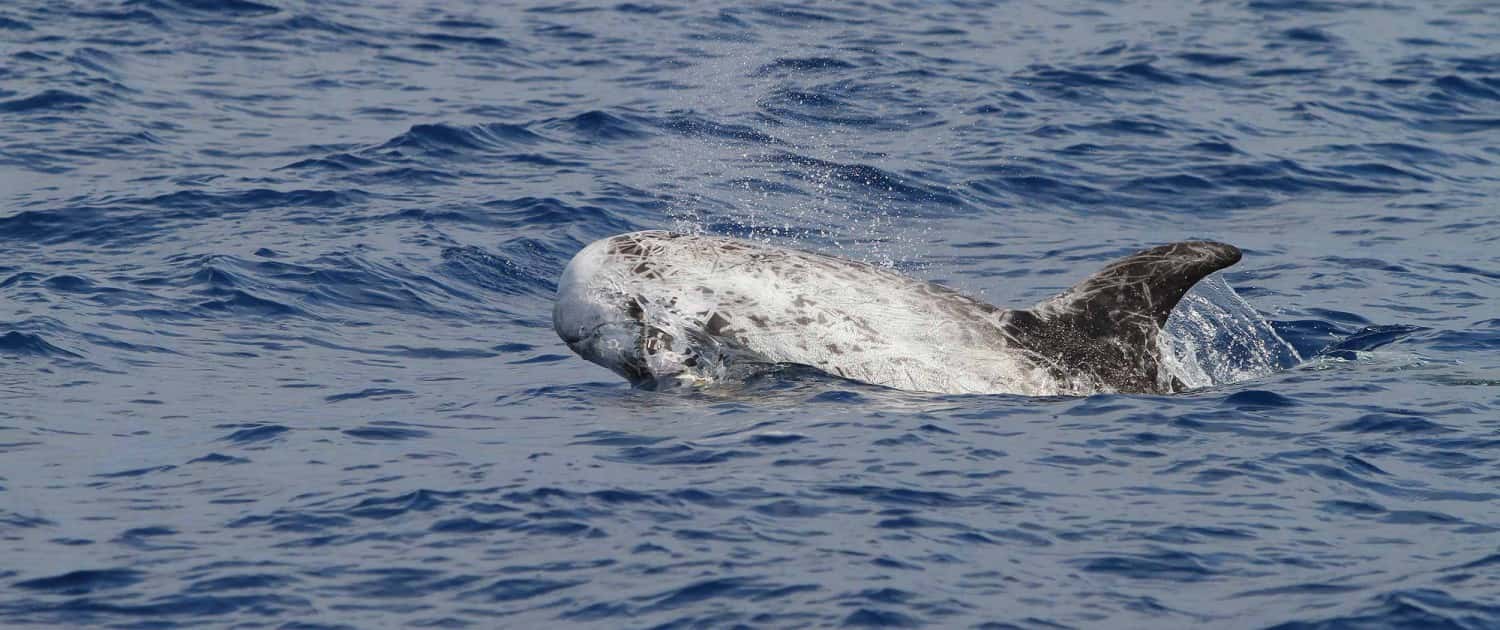Although Risso’s dolphins are widely spread throughout the Mediterranean, mostly preferring waters over the inner continental slope, they are nowhere frequent and therefore not much is known about their ecology in the region (Bearzi et al. 2010). Risso’s dolphins in the western Pelagos Sanctuary have been the subject of Tethys’ investigations since 1996, expanded as a dedicated “Mediterranean Grampus Project” since 2013. These include:
- a first estimate of the Risso’s dolphin population in the area (200-250 individuals) by means of the application of mark-recapture methods to photo-identification data in the frame of a cooperative effort amongst Italian and French organisations. The study revealed that the dolphins undergo long-range movements bringing them outside the Pelagos’ boundaries;
- a study of the presence and trends in abundance of Risso’s dolphins, as well as sperm whales and Cuvier’s beaked whales, in selected portions (inner and upper continental slope) of the Pelagos Sanctuary, between 1996 and 2000. The research, based on measures of relative abundance, indicated that Risso’s dolphins were found strongly associated to well defined depth and slope gradient characteristics of the shelf-edge and the upper and lower slope. Analyses using depth and slope as predictors outlined clear and not overlapping habitat preferences for Risso’s dolphin and Cuvier’s beaked whale, whereas a partial overlapping of the habitat of the other two species was observed for sperm whale (Azzellino et al. 2008);
- a comparison between Mediterranean and northeast Atlantic individuals based on genetic analyses of biopsy samples, showing a clear differentiation between the two populations (Gaspari et al. 2006).
Literature
Bearzi G., Reeves R.R., Remonato E., Pierantonio N., Airoldi S. 2010. Risso’s dolphin Grampus griseus in the Mediterranean Sea. Mammalian Biology 16 p. doi:10.1016/j.mambio.2010.06.003
Azzellino A., Gaspari S., Airoldi S., Nani B. 2008. Habitat use and preferences of cetaceans along the continental slope and the adjacent pelagic waters in the western Ligurian Sea. Deep Sea Research Part I. 55:296-323. doi:10.1016/j.dsr.2007.11.006
Gaspari S., Airoldi S., Hoelzel A.R. 2006. Risso’s dolphins (Grampus griseus) in UK waters are differentiated from a population in the Mediterranean Sea and genetically less diverse. Conservation Genetics 8(3):727-732. DOI 10.1007/s10592-006-9205-y


